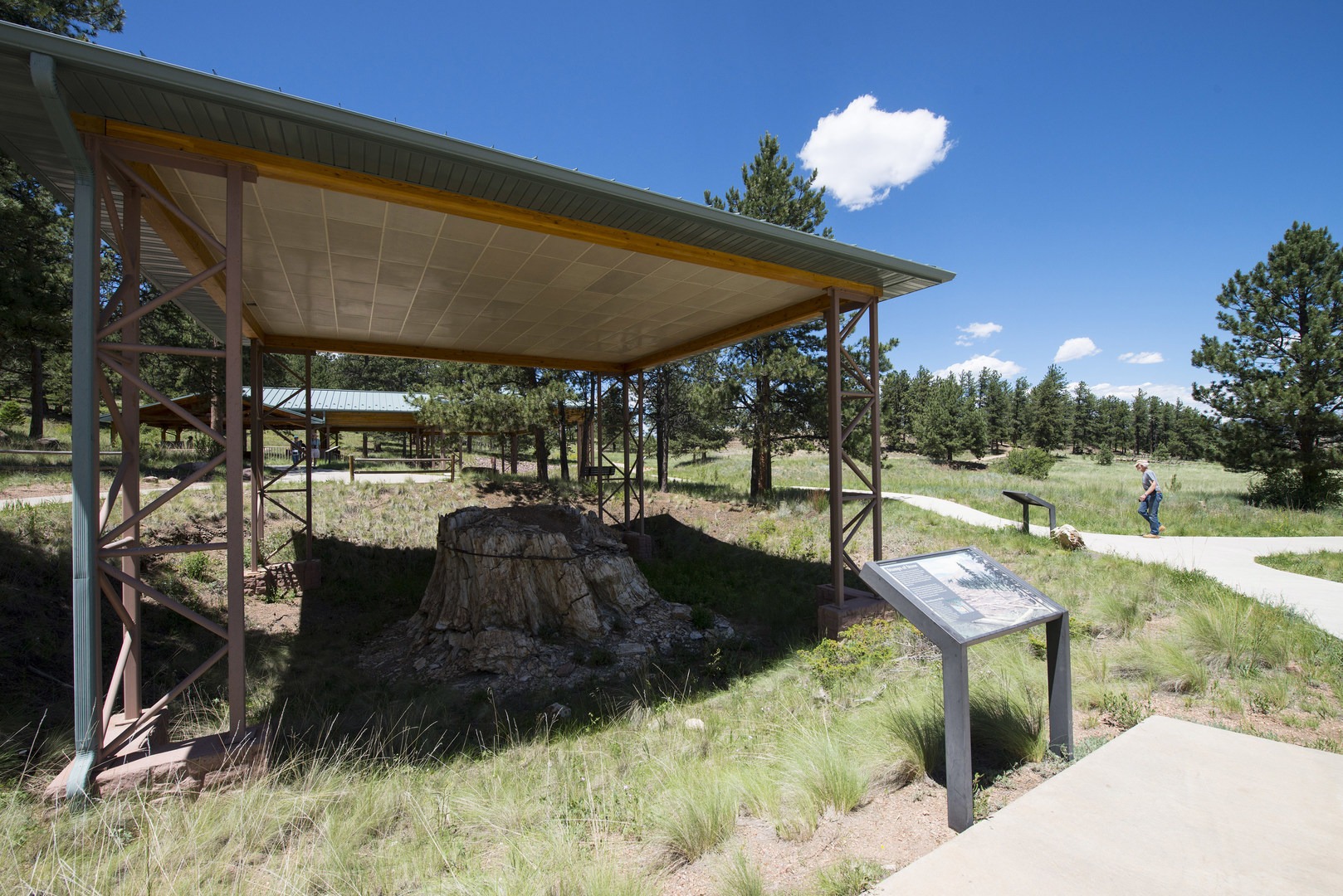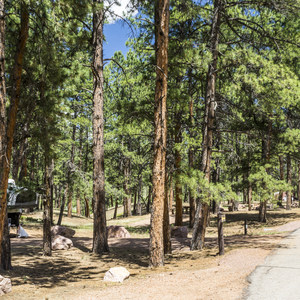You are here
The valley that is now central Colorado near Florissant was a lush redwood forest 35 million years ago, similar to those in California’s Sierra Nevada range. Then part of the Guffey Volcanic complex, eruptions of the Guffey Volcano and the ash it deposited in the valley created a large lake. With each subsequent eruption, plants and insects trapped in the ash were buried in sediment at the bottom of the lake. In a similar fashion, the volcano’s ash suffocated the roots of the redwoods, and the trees gradually decayed to leave only the stumps behind.
Over time, this cyclical process trapped plants and animals in thin layers of shale on display at Florissant Fossil Beds National Monument today. As many as 50,000 specimens from 1,700 species have been discovered at Florissant since the 19th century, including one of the world’s only known tsetse fly specimens.
There are many ways to enjoy the ecological legacy here. Interpretive exhibits are on display at the visitor center, interactively showcasing the flora and fauna of prehistoric Florissant. Two of these, just outside, provide views of petrified stumps with interpretive signage. The Fossil Learning Lab, open during summer afternoons, provides ranger-led demonstrations of how they find and preserve the fossils, including an opportunity for visitors to engage in hands-on exploration on their own. Between Labor Day and Memorial Day, the visitor center shows an educational video, “Shadows of the Past.” In collaboration with the Colorado Springs Astronomical Society, the monument provides a Night Sky Program with a 30-minute ranger presentation and 90 minutes of stargazing.
Florissant Fossil Beds has a trail network that extends over 14 miles alongside petrified redwood stumps through wide, grassy valleys. Of these, two trails are self-guided; the Petrified Forest Loop passes the “Big Stump,” and the Geologic Trail passes over the ancient lake bed, pyroclastic flow from one of Guffey’s eruptions, and ends at a scenic overlook. While none of these trails is open to horseback riding, riders are allowed to wander within the monument at will so long as it isn’t destructive.
In the winter, the park becomes an ideal playground for snowshoers and cross-country skiers, and there are occasional ranger-guided snowshoe hikes. Call the monument for details.











Comments
Sign In and share them.